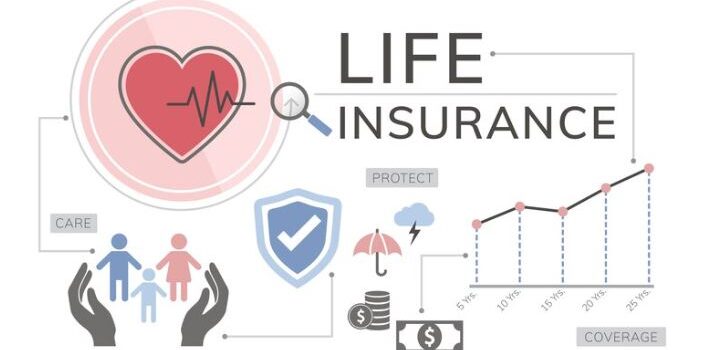
Introduction
In the realm of financial planning, the choice between fixed deposits and life insurance holds significant weight for individuals navigating their financial journey. This exploration aims to unravel the complexities of this dilemma, guiding you towards an informed decision.
The central question, “Which is the better investment for your financial goals?” serves as your compass through this comparison. Tailored for the diverse Indian audience, this exploration sheds light on the intricacies of fixed deposits and life insurance, empowering you to align investments with your unique financial landscape.
Interest Rates and Returns
To grasp the nuances between fixed deposits and life insurance policies, it’s crucial to examine the role of interest rates and returns. Fixed deposits offer stability with predetermined interest rates for the entire investment tenure, ensuring a straightforward approach. However, this stability may come at the expense of potentially higher returns.
In contrast, life insurance policies present a more intricate scenario. Returns are not solely dependent on interest rates; they encompass various factors such as market-linked returns, bonuses, and maturity benefits. The type of life insurance policy and prevailing market conditions significantly influence these returns.
Investors seeking optimal financial growth must understand this interplay. By considering the dynamic nature of interest rates and life insurance returns, individuals can make well-informed decisions aligned with their risk tolerance, financial objectives, and overall investment strategy.
Risk and Safety
In the realm of financial instruments, the evaluation of risk factors is crucial in determining the suitability of investments. Fixed deposits, while generally considered low-risk, are not without their own set of risks. One primary risk associated with fixed deposits is interest rate risk. When interest rates in the market fluctuate, existing fixed deposits may become less attractive as they offer fixed interest rates. This can result in an opportunity cost for investors who may miss out on higher rates available in the market.
Contrasting this, life insurance policies extend a safety net beyond mere financial growth. Life insurance, fundamentally, serves as a protective shield for individuals and their families.
It goes beyond the realm of market risks and interest rate fluctuations. In the event of the policyholder’s demise, life insurance provides a lump sum amount or periodic payments to the beneficiaries, ensuring financial security and stability. This protective element distinguishes life insurance from fixed deposits, offering a comprehensive solution that not only considers financial growth but also addresses the safety and well-being of loved ones.
Tax Implications
When delving into the realm of fixed deposits, it’s essential to consider the tax implications. Interest earned on fixed deposits is subject to Tax Deducted at Source (TDS) if it exceeds a certain threshold.
Additionally, the interest income is taxable as per the individual’s income tax slab. This means that individuals need to account for these tax liabilities, potentially reducing the overall returns from fixed deposits.
On the other hand, life insurance policies offer specific tax benefits. Premiums paid towards life insurance policies are eligible for tax deductions under Section 80C of the Income Tax Act.
Furthermore, the maturity proceeds and death benefits received from life insurance policies are generally exempt from income tax under Section 10(10D), making life insurance an attractive option for those seeking tax-efficient investment avenues. Understanding these tax implications is essential for making informed decisions aligned with one’s financial goals.
Liquidity and Lock-in Period
When it comes to liquidity, fixed deposits provide a relatively straightforward avenue. Investors can typically access their funds with relative ease, especially in the case of regular fixed deposits. However, it’s crucial to note that premature withdrawals from fixed deposits may incur penalties or result in reduced interest rates.
This liquidity flexibility makes fixed deposits suitable for individuals who may need access to their funds in the short term but are willing to adhere to the terms and conditions associated with withdrawals.
Contrastingly, life insurance policies often come with a lock-in period, during which premature withdrawals may not be allowed or could be subject to penalties. While this feature restricts immediate access to funds, it contributes to the disciplined nature of life insurance investments.
Understanding the liquidity dynamics of both fixed deposits and life insurance is essential for aligning your investment choices with your financial goals and liquidity needs.
Financial Goals Alignment
Aligning your financial goals with the most suitable investment option is crucial for optimising returns and achieving your desired outcomes. Fixed deposits are ideal for short to medium-term goals where capital preservation and a steady, predictable return are priorities.
If you have a specific expense in the near future, like purchasing a car or funding a holiday, fixed deposits can offer the liquidity and stability needed.
On the other hand, life insurance, with its long-term commitment, is well-suited for goals with extended horizons such as providing for your child’s education or securing your family’s financial future in the long run.
The disciplined, systematic nature of life insurance premiums ensures that you stay on course to meet these long-term objectives. By understanding the time horizon and specific objectives associated with your financial goals, you can tailor your investment approach to either fixed deposits or life insurance accordingly.
Comparative Table
Here’s a concise table summarising the key features, pros, and cons of fixed deposits and life insurance:
| Aspect | Fixed Deposits | Life Insurance |
| Interest Rates | Fixed and known at the time of investment | Variable, influenced by market conditions |
| Risk and Safety | Low-risk but subject to interest rate fluctuations | Offers protection, acts as a financial safety net |
| Tax Implications | Taxable interest with TDS deductions | Tax benefits on premiums and maturity amount |
| Liquidity and Lock-in Period | Generally liquid with penalties for premature withdrawals | Longer lock-in periods with limited liquidity |
| Financial Goals Alignment | Ideal for short to medium-term goals | Suited for long-term goals and financial security |
Conclusion
In conclusion, the decision between fixed deposits and life insurance hinges on several crucial factors. While fixed deposits offer stability and liquidity for short to medium-term goals, life insurance provides a safety net with tax benefits for long-term financial security.
It’s vital to align your choice with specific financial goals, considering factors like risk tolerance and liquidity needs. In summary, choose fixed deposits for stability in shorter goals, and opt for life insurance for long-term protection.
Ultimately, a well-informed decision should reflect your unique financial circumstances and aspirations. Prioritise aligning your investments with your long-term financial objectives for a secure and prosperous future.










